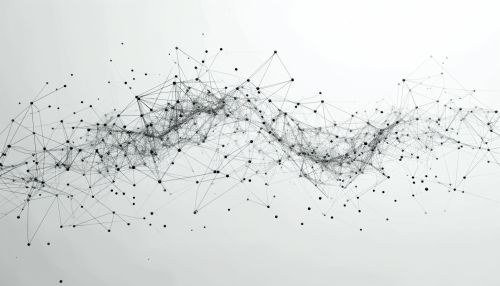Connected space
Definition
In topology, a branch of mathematics, a connected space is a topological space that cannot be represented as the union of two or more disjoint nonempty open subsets. This concept is closely related to the intuitive idea of a single piece, and is one of the most fundamental concepts in topology.
Basic Concepts
A topological space is said to be connected if it is not the union of two disjoint nonempty open sets. This definition can be extended to include more general topological spaces, such as those that are not necessarily open or closed. For example, a space is said to be path-connected if any two points in the space can be connected by a continuous path.


Properties
Connected spaces have several important properties that distinguish them from other types of topological spaces. Some of these properties are:
- Invariance under Homeomorphisms: If a topological space is connected, then any homeomorphism (a continuous function with a continuous inverse) will map it to another connected space. This property is a consequence of the fact that homeomorphisms preserve the open sets of a topological space.
- Product Spaces: The product of connected spaces is connected. This is a result of the Tychonoff theorem, which states that the product of any collection of compact spaces is compact.
- Intermediate Value Theorem: The Intermediate Value Theorem holds for connected spaces. This theorem states that if a function is continuous on a connected space, then it takes on every value between any two values in its range.
Types of Connected Spaces
There are several types of connected spaces, each with their own unique properties and characteristics. Some of the most common types include:
- Path-Connected Spaces: A path-connected space is a type of connected space where any two points can be connected by a continuous path. This is a stronger condition than being merely connected, as there are connected spaces that are not path-connected.
- Simply Connected Spaces: A simply connected space is a connected space that has no "holes". More formally, a space is simply connected if it is path-connected and every loop in the space can be continuously transformed (without leaving the space) into any other loop.
- Locally Connected Spaces: A locally connected space is a connected space where every point has a base of connected neighborhoods. This property is stronger than mere connectedness, but weaker than path-connectedness.
Applications
Connected spaces have a wide range of applications in various fields of mathematics and science. Some of the most notable applications include:
- Topology: The concept of connectedness is fundamental to the study of topology. It is used to classify and analyze the properties of various topological spaces.
- Differential Geometry: In differential geometry, connectedness is used to study the properties of curves and surfaces.
- Complex Analysis: In complex analysis, the concept of a connected space is used to define and study complex functions and their properties.
- Physics: In physics, connected spaces are used to model physical systems, such as the space of states in quantum mechanics.
